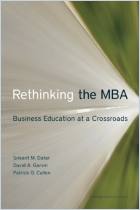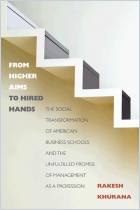
Manufacturing Morals
The Values of Silence in Business School Education
Recommendation
If you think that morals and ethics should be – or could be – inculcated into an organization’s culture by being part of the unspoken basic foundation of daily life, then the Harvard Business School may be the place for you. Can creating a setting for MBA students where ethical training is part of the air they breathe actually shape future executives with staunch, internal moral standards? Harvard associate business professor Michel Anteby thinks so. He explains how the Harvard Business School tacitly instills an ethical foundation it hopes will guide its students’ professional conduct. He says HBS hopes this moral base will instill ethical, professional conduct, and he offers a unique perspective on how the School – a capital S, always, please – implicitly transmits good character through its structure, tradition and rituals, without specifically teaching morality. Though unusually interesting because of Anteby’s inside viewpoint and candid voice, this isn’t a casual read and the method sounds as if students also could use (and in practice, probably get) a stern talking-to about ethics now and then. getAbstract recommends this overview to anyone curious about the inner workings of this elite institution, to students trying to get in and to companies ready to use any reasonable tactic to teach moral conduct and add the foundational assumption of ethical practice to their intrinsic corporate culture.
Summary
About the Author
Michel Anteby is an associate professor and the Marvin Bower fellow in the organizational behavior unit at Harvard Business School. He also wrote Moral Gray Zones: Side Productions, Identity and Regulation in an Aeronautic Plant.



















Comment on this summary